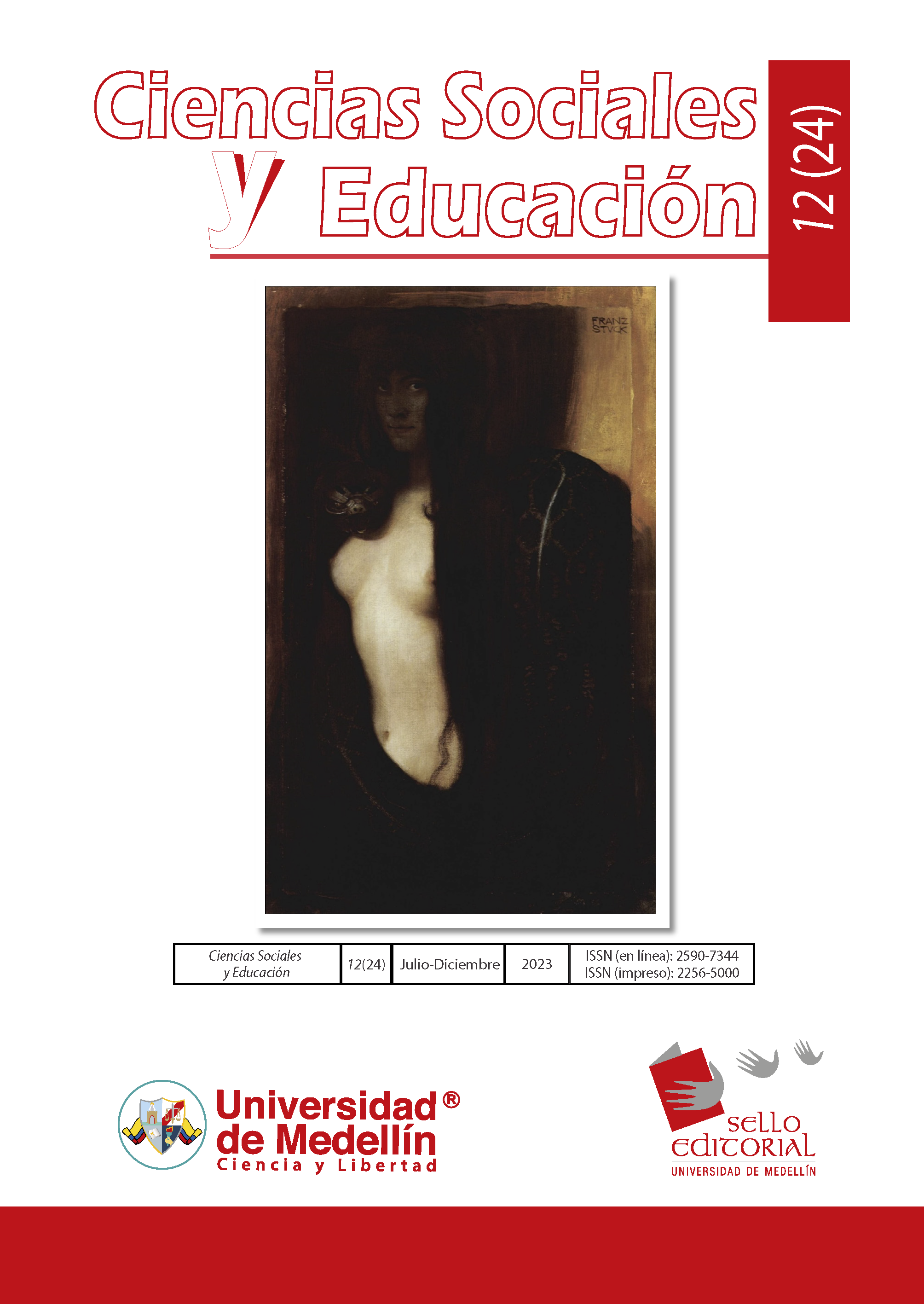La traducción de textos jurídicos: perspectivas interlingüísticas e intralingüísticas
Contenido principal del artículo
Resumen
El presente artículo tiene en cuenta algunos aspectos del proceso de traducción de textos jurídicos, examinados desde una perspectiva tanto interlingüística como intralingüística. En cuanto a la traducción interlingüística, se discuten limitaciones lingüísticas específicas, así como influencias derivadas de diferentes tradiciones de redacción y culturas jurídicas. El artículo también toma en consideración el fenómeno de la traducción intralingüística con especial atención a las estrategias de popularización adoptadas a menudo en este proceso. El análisis realizado muestra la complejidad de la traducción de textos jurídicos, que está muy condicionada por factores específicos que dependen estrictamente no solo de los diferentes entornos culturales, lingüísticos y jurídicos en los que se lleva a cabo, sino también de los usuarios objetivos con su propia cultura jurídica y conocimientos especializados.
Detalles del artículo
Citas
Anesa, P. (2012). Jury trials and the popularization of legal language: A discourse analytical approach. Peter Lang.
Aron, R., Fast, J. y Klein, R. (1996). Trial communication skills. Clark Boardman Callaghan.
Beaupré, M. (1986). Interpreting bilingual legislation. Carswell.
Canadá. (1995, 15 de diciembre). Employment Equity Act [Ley de Equidad en el Trabajo]. https://lawslois.justice.gc.ca/eng/acts/e-5.401/FullText.html
Cao, D. (2008). Is the Chinese legal language more ambiguous and vaguer? En A. Wagner y S. Cacciaguidi-Fahi (eds.), Obscurity and clarity in the law: Prospects and challenges (pp. 109-125). Ashgate.
Cheng, L., Sin, K-K. y Cheng, W. (2014). Legal translation: A sociosemiotic approach. Semiotica, 201(1/4), 17-33. https://doi.org/10.1515/sem-2014-0019
Chromá, M. (2007). Cross-cultural traps in legal translation. En C. Candlin y M. Gotti (eds.), Intercultural aspects of specialized communication (2.a ed.) (pp. 197-221). Peter Lang.
Chromá, M. (2014). Making sense in legal translation. Semiotica, 201(1/4), 121-144. https://doi.org/10.1515/sem-2014-0018
David, R. (1980). English law and French law. Stevens.
Driedger, E. (1982). Legislative drafting style: Civil law versus common law’. In J-C. Gémar (ed.), Langage du droit et traduction [The language of the law and translation] (pp. 63-81). Linguatech/Conseil de la Langue Française.
Dumas, B. (2000). US pattern jury instructions: Problems and proposals. Forensic Linguistics, 7(1), 49-71.
Ellsworth, P. y Reifman, A. (2000). Juror comprehension and public policy: Perceived problems and proposed solutions. Psychology, Public Policy, and Law, 6(3), 788-821. https://psycnet.apa.org/doi/10.1037/1076-8971.6.3.788
Fletcher, G. (1999). Fair and reasonable: A linguistic glimpse into the American legal mind. In R. Sacco y L. Castellani (eds.), Les multiples langues du droit européen uniforme [The manifold languages of European uniform law] (pp. 57-70). L’Harmattan Italia.
Garzone, G. y Catenaccio, P. (2013, 12-14 de septiembre). Building shared values through rewriting: The case of the Montréal Charter of Rights and Responsibilities [paper]. 26th AIA Conference: Remediating, rescripting, remaking: Old and new challenges in English studies, Parma, Italia.
Gialuz, M., Lupária, L. y Scarpa, F. (2014). The Italian code of criminal procedure. Kluwer Italia.
Gotti, M, (2016). The translation of legal texts: interlinguistic and intralinguistic perspectives. E. S. P. Today, Journal of English for Specific Purposes at Tertiary Level, 4(1), 1-140. https://www.esptodayjournal.org/pdf/current_issue/3.6.2016/MAURIZIO-GOTTI-full-text.pdf
Gotti, M. y Å arÄević, S. (eds.) (2006). Insights into specialized translation. Peter Lang.
Hatim, B. y Mason, I. (1997). The translator as communicator. Routledge.
Heffer, C. (2008). The language and communication of jury instructions. En J. Gibbons y M. T. Turell (eds.), Dimensions of forensic linguistics (pp. 47-65). John Benjamins.
Hong Kong. (1997, 1 de julio). Interpretation and General Clauses Ordinance [Ordenanza de Interpretación y Cláusulas generales]. https://www.elegislation.gov.hk/hk/cap1
Heutger, V. (2008). Legal language and the process of drafting the principles on a European Law of sales. Electronic Journal of Comparative Law, 12(2), 1-15.
Jakobson, R. (1959). On linguistic aspects of translation. En R. A. Brower (ed.), On translation (pp. 232-239). Harvard University Press.
Liao, M-H. (2013). Popularization and translation. En Y. Gambier y L. van Doorslaer (eds.), Handbook of translation studies. Vol. 4 (pp. 130-133). John Benjamins.
Mac Aodha, M. (2014). Legal translation: An impossible task? Semiotica, 201(1/4), 207-221. https://doi.org/10.1515/sem-2014-0017
Nida, E. y Taber, C. (1982). The theory and practice of translation. Brill.
Organización de las Naciones Unidas (ONU). (1989, 20 de noviembre). Convención sobre los Derechos del Niño. Resolución 44/25. https://www.un.org/es/events/childrenday/pdf/derechos.pdf
Salmasi, S. (2003). English as a lingua franca at the European Union: The undertakings of pride? Recherches Anglaises et Nord-Américaines, 36(2), 113-120. https://www.persee.fr/doc/ranam_0557-6989_2003_num_36_2_1693
Å arÄević, S. (2000). New approach to legal translation (2.a ed.). Kluwer Law International.
Å arÄević, S. (2010). Creating a pan-European legal language. En M. Gotti y C. Williams (eds.), Legal discourse across languages and cultures (pp. 23-50). Peter Lang.
Seymour, E. (2002). Euro-English: The new pidgin? Terminologie et traduction, 3, 22-32.
Simms, K. (1997). Introduction. En K. Simms (ed.), Translating sensitive texts. Linguistic aspects (pp. 1-26). Rodopi.
Tiersma, P. (1999). Legal language. The University of Chicago Press.
Tiersma, P. (2010). Redrafting California’s jury instructions. En M. Coulthard y A. Johnson (eds.), The Routledge handbook of forensic linguistics (pp. 251-264). Routledge.
Unicef. (1989, 20 de noviembre). Convenzione sui diritti dell’infanzia e dell’adolescenza. https://web.archive.org/web/20151021190125/http://www.unicef.it/Allegati/Convenzione_diritti_infanzia_1.pdf






